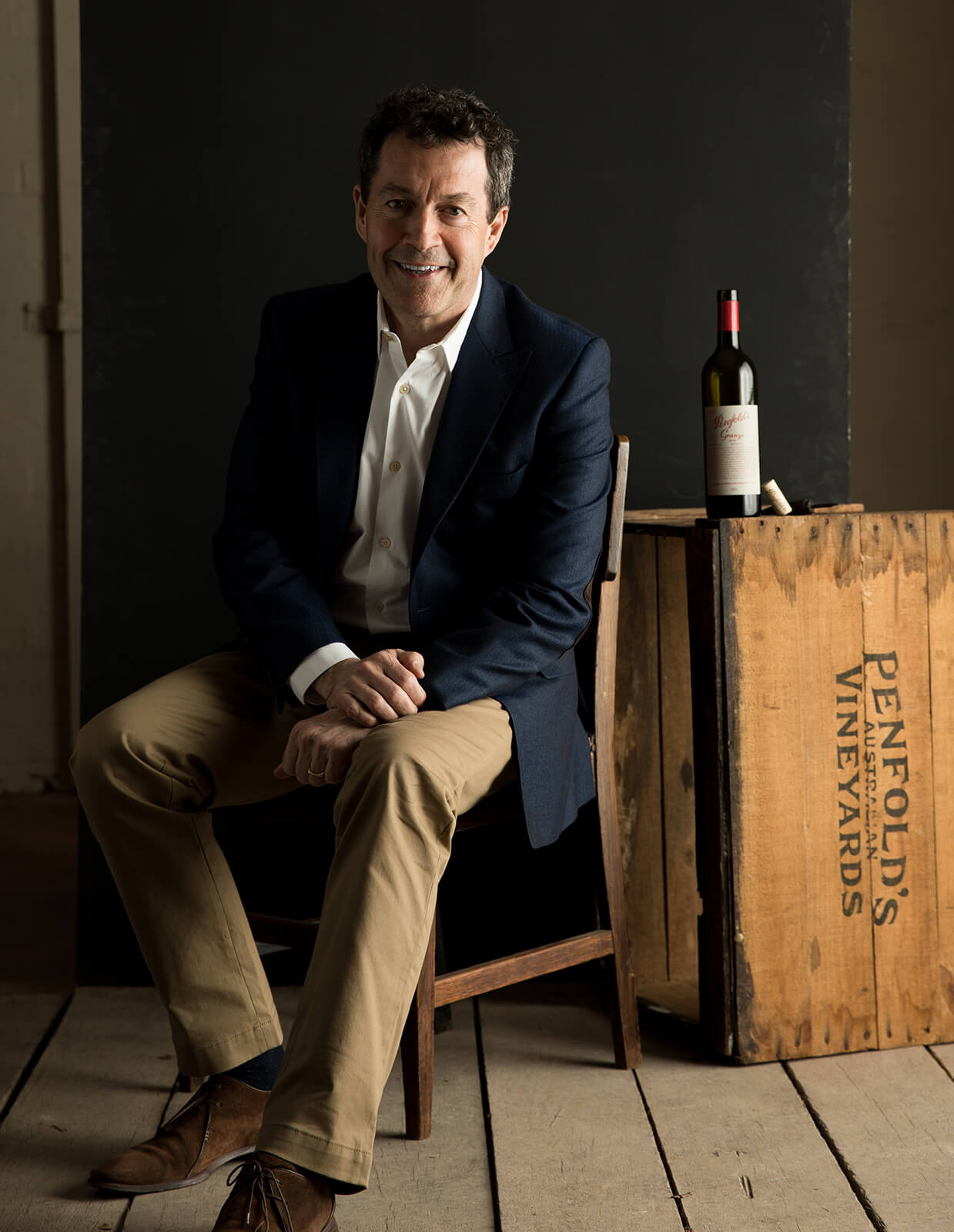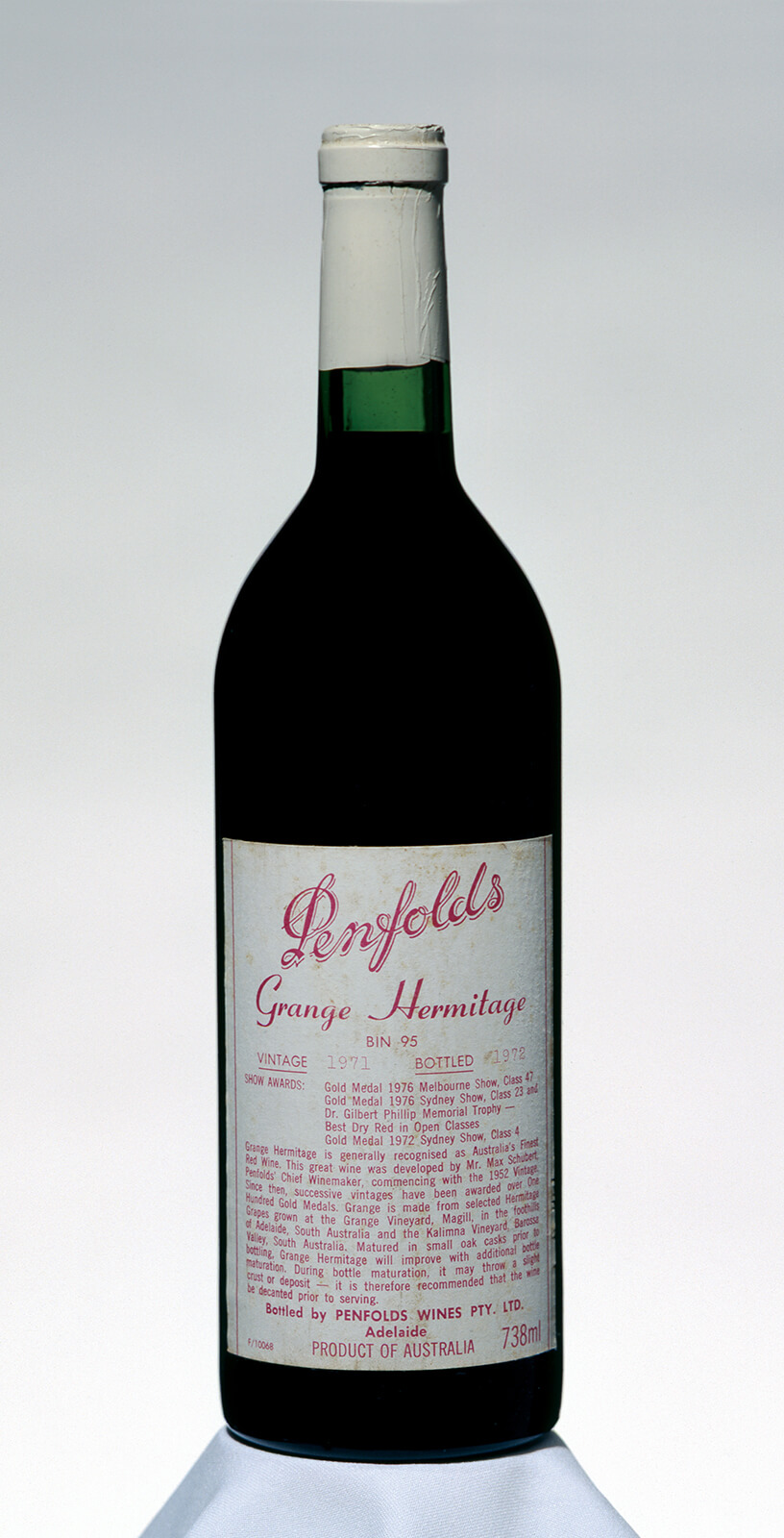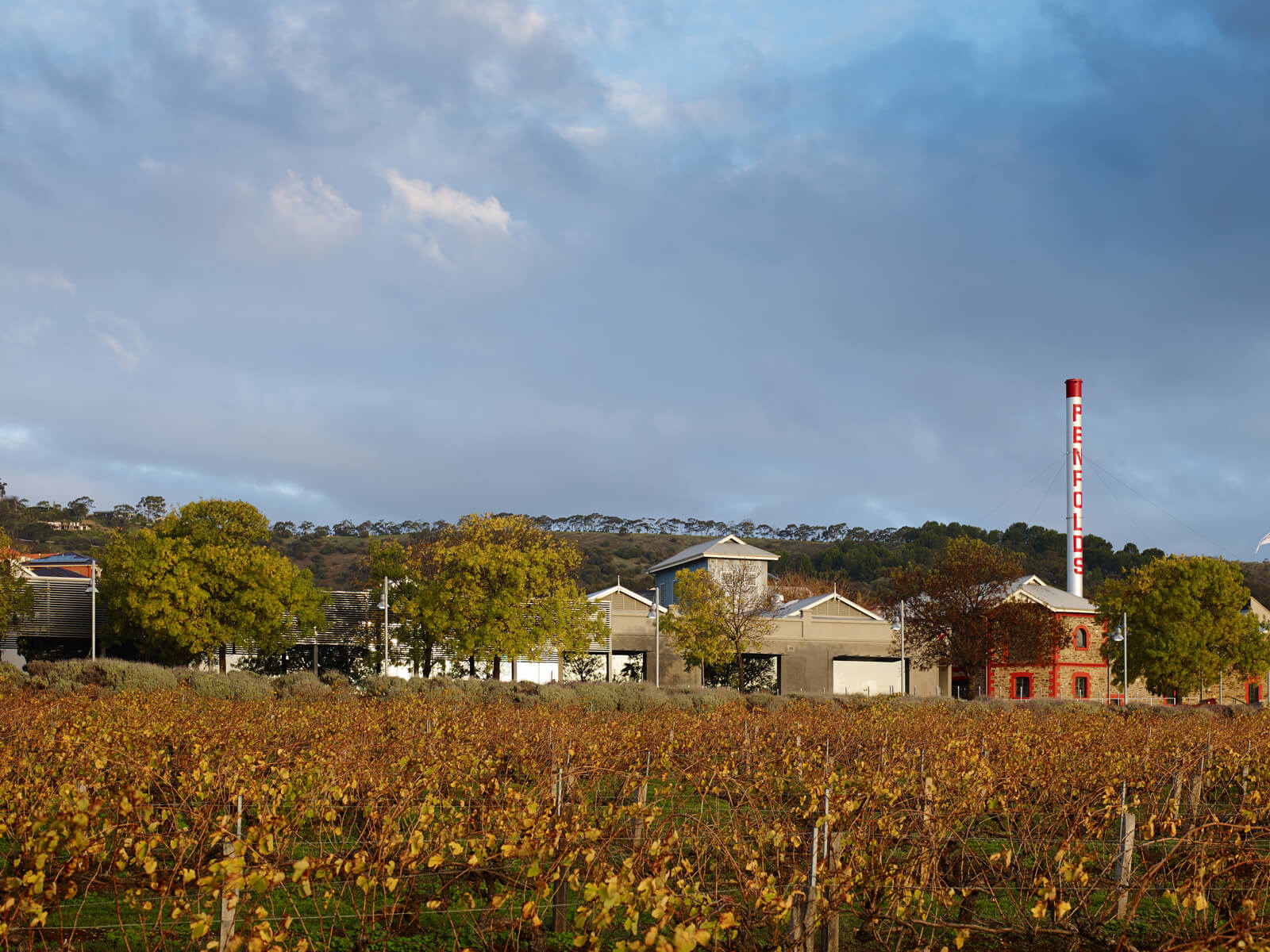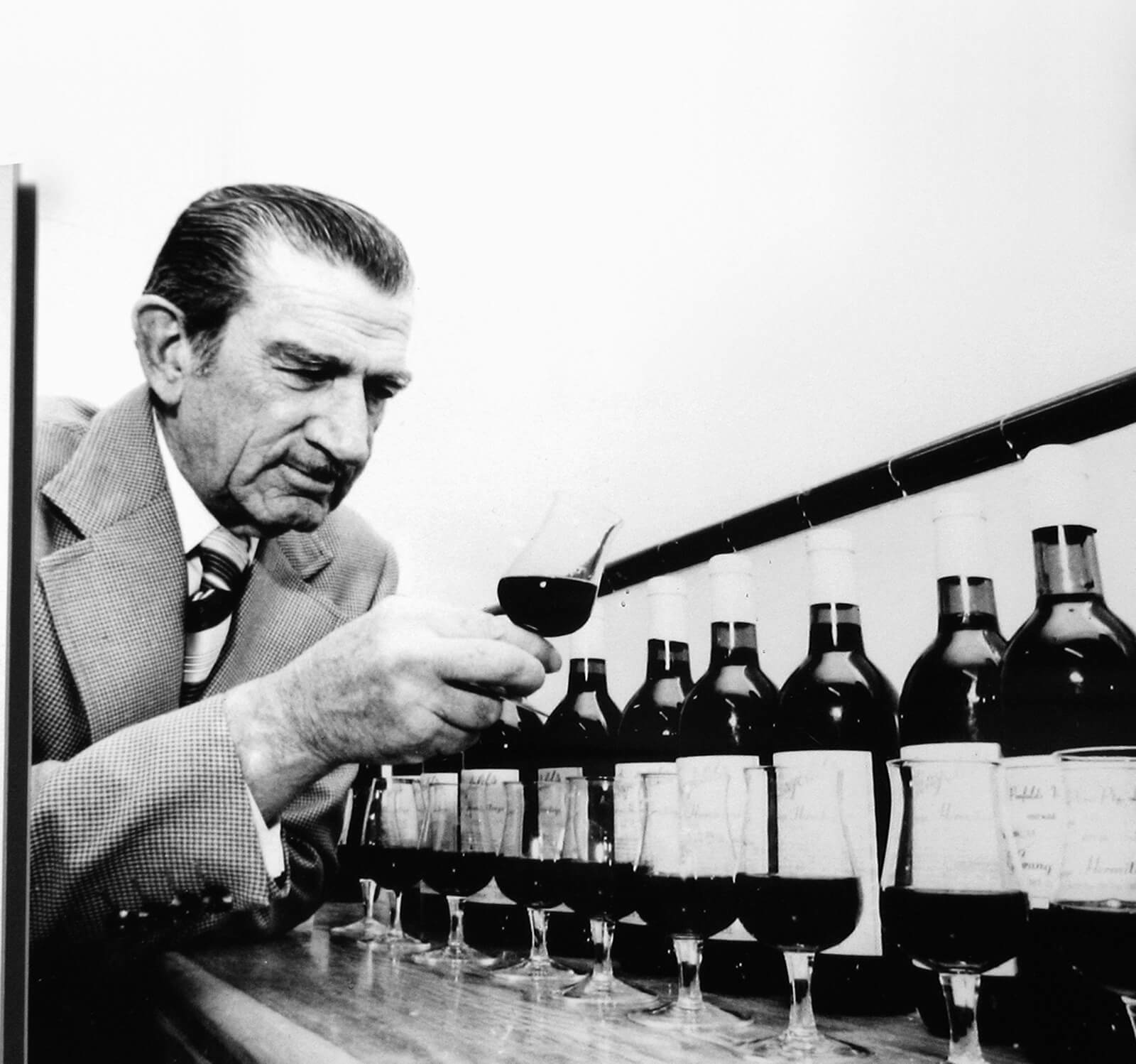Penfolds Bin 60A 1962: Australia’s Greatest Wine Ever (Or Certainly A Serious Contender)
by Ken Gargett
Sometimes it seems that drinking the last remaining bottles of a great wine is akin to a hunter shooting an endangered species. And if that were so, Penfolds’ chief winemaker Peter Gago would be an environmentalist’s worst nightmare. (In truth, I could no more imagine Peter shooting anything than myself.)

Penfolds chief winemaker Peter Gago
The thought struck me when a friend from “the West” (for non-Aussies, that’s the state of Western Australia) told me that she had shared a bottle of the legendary Penfolds Bin 60A 1962 with Gago and that he was sharing a couple more while over that way.
Approaching its sixtieth anniversary, Bin 60A 1962 must surely be nearing extinction. Just as one is truly horrified that so many animals are facing the same fate, it seems terribly sad that this wine (and others) will soon be no more. Of course, if I was drinking them I might not be so miserable about it.
The question of the GOAT (“Greatest Of All Time”) is always a tough one, often good fun. There will always be arguments over the best artist, best singer, best rock star (well, the argument should be who is second behind Bruce Springsteen, but it appears that not everyone has come to that realization as yet) and so on.
Occasionally, one can state without contradiction that someone truly is the greatest of all time – the obvious example is that by any measure there has never been a sportsman to match the feats of that great cricketer, Sir Donald Bradman – but even accepting that still engenders discussion debate as to best tennis player, best runner, best footballer, and so on.
In an earlier piece, I suggested that the 1929 DRC Romanée-Conti is for me the greatest of all wines – it’s certainly the greatest wine I have ever tasted.
Best Australian wine of all time
Best Aussie wine? There are a few options, but here is probably not the place for a detailed dissertation on contenders other than to drop some names. The Woodley’s Coonawarra Treasure Chest series from the late 1940s and ’50s, the extraordinary wines made by Maurice O’Shea at Mt. Pleasant in the Hunter around the same period, Mildara’s Peppermint Pattie (a Coonawarra Cabernet from 1963), Penfolds Granges from such scintillating vintages as 1953, 1955 and 1971, and Wynn’s Michael Hermitage (Shiraz) from 1955 are all worthy choices.

Penfolds Grange Hermitage Bin 95 1971 vintage
But in the end, it comes down to a couple of wines.
The “twin bins,” a pair of 1965 Lindeman’s Hunter River Burgundies (the name Burgundy was common parlance in the Australian wine industry at the time, even though utterly inappropriate), Bin 3100 and Bin 3110, although this gets confusing as the Bin 1590 from 1959 may be an even better wine than either of those.
I’m not sure it will have the legs of its younger siblings, but it is so rare we’ll probably never know. Even the Twin Bins are incredibly hard to source these days, although there was a time when they’d regularly pop up at lunches and dinners.
As Andrew Caillard MW, one of the stalwarts of Langton’s Auctions for many years, says, “Today, it is easier to buy 1945 Château Mouton Rothschild or 1921 Château d’Yquem than it is 1965 Lindeman’s Bin 3100.”
There are reports that Caillard has tasted the wine more than 100 times (he is not prone to exaggeration, so if that came from him I would assume it true). I have been fortunate to taste it several times but nothing like that.

Penfolds Bin 60A 1962 vintage
But the winner for me is the Penfolds Bin 60A 1962, a wine that was never commercially released. The highly respected former chief winemaker at Hardys, Tim James, once told me his vote went to the Lindeman’s because as good as Bin 60A was, for him it was spending a couple of decades on a plateau, whereas the Lindeman’s just seemed to get better every time a bottle was opened.
As you can see, this is a debate with no clear answer. One just needs a few bottles of each and a late night with friends to discuss it. In any event, the Lindeman’s Twin Bins are worth a look in a separate piece down the track.

Penfolds winery in the Barossa Valley, South Australia
Penfolds Bin 60A 1962
Bin 60A 1962 (I add the 1962 as it was reprised in 2004 with a very fine wine) was not the first Special Bin made by Penfolds, but it was an early example and has become the most famous of all.
These wines are offered irregularly and always, as the name demands, offer something a bit special. Even though it was never commercially released, it was the company’s most successful show wine, winning an astonishing 19 trophies and 33 gold (this was at a time when golds were only awarded one per category, whereas today any number of wines can win gold if the judges deem them good enough).

Max Schubert tasting Penfolds Grange wines
Made by the famous Max Schubert, the man who created the sensational Grange, Bin 60A was a blend of two-thirds Coonawarra Cabernet Sauvignon from the vineyards known as Sharam’s Block and Block 20, and one-third Barossa Shiraz from the famous original Kalimna Vineyard.

Penfolds Magill Estate
It was made and matured at Magill Estate. The grapes were supposedly foot-stamped before fermentation in wax-lined concrete vats with wooden header boards to keep the cap submerged, improving extraction. The average fermentation temperature was 22°C.
Apparently, there was a daily “racking and return” (délestage), where the tank was emptied and then the aerated fermenting must (juice) was returned. As the wine neared completion of fermentation, it went through a basket press then transferred to new American 300-liter barrels for the next 15 months. Bottled in December 1963. Only 425 dozen were made.
For me, it is the ultimate “Magic Pudding” wine (The Magic Pudding was an Australian children’s story written and illustrated by Norman Lindsay, a famous Australian artist, in which no matter how much of the pudding is eaten it keeps replenishing itself).
This wine seems to do just that! It seems to have been shown so regularly, at least up until a few years ago, that it must surely be down to the last few bottles. Who knows?
For a wine under cork, it has been remarkably consistent. I’ve never tasted a bottle that did not sing. The last time was a couple of years ago at a tasting in Helsinki (yes, now I feel like I’ve shot a rhino). Run by the Fine Wine group and www.tastingbook.com, it was an amazing weekend with a collection of wines that had to be seen to be believed.
The previous year, Penfolds had supplied several vintages of Grange for a similar event (the greatest wine from the 1970s) and the 1971 lived up to its reputation, picked as the best of all.
All wines are served blind and most of the panel of those attending – from all over Europe, North and South America, and a few from down under – was mortified to learn that they had picked an Australian wine as the very best of the decade. The horror!
I was tasked with speaking with Penfolds to see if they might be interested in entering anything into the “Time Machine Tasting” for the following year – basically a look through contenders for the greatest wines of the century (and even what should contend will engender fierce debate). To my delight and amazement, Penfolds offered a Bin 60A.
If the reaction was nearing disgust when the judges nominated an Aussie wine the previous year, imagine the mortification when they made it two out of two, calling the Bin 60A the best wine of the entire Time Machine Tasting. I can assure you that the judges now take Australian wine far more seriously than they ever dreamt they might.
Think I am exaggerating?
I can’t blame you, but here is a brief look at some of the wines, and we are talking wines kept in perfect cellaring conditions, it topped to take first place:
Pétrus from 1949 and 1952
Mouton Rothschild from 1900, 1929, and 1960
Château d’Yquem 1949
Cheval Blanc from 1949 (on two days running!), 1950, 1952, and 1975 (if it makes you feel better, one of the 1949s and the 1975 were both suffering from malignant tree bark but redeemed by the superlative 1952)
Margaux 1947 and 1959
Château Ausone 1950
Vega Sicilia Unico 1952
Richebourgs from 1923, 1950, and 1959
Musignys from 1945, 1949, and 1959
Dom Perignon 1964, 1990 P3, 1995 P2, 1998 P2, and the Rosé 1995 P2
Louis Roederer Cristal 1996 and a double magnum from 1999
Krug 1998 and Krug’s Clos du Mesnil, also from 1998
Charles Heidsieck 1959, its Blanc des Millenaires 1990 and 1995, and Rosé from 1999
De Vogue Bonnes Mares 1953
Les Malconsorts 1929
Charmes-Chambertins from 1950, 1959, and 1964
A number of Pol Roger Sir Winston Churchills although I recall that on the day they were all topped by a spectacular standard vintage 1993, with the exception of the majestic 1996 Sir Winston
A range of Veuve Clicquots back to 1955 and including the incredibly rare Veuve Clicquot 1772-1972 Bi-Centenary Demi-Sec
Échezeaux 1964
A truly brilliant Colgin Herb Lamb Cabernet 1997 from Napa Valley
Château Montrose from 1921 and 1929
Lafleur from 1944 and 1959
A couple of Vintage Ports from 1900
About 130 other wines of similar standard
If it is any consolation, the array from the previous year left this lineup for dead (did I mention the 1929 DRC Romanée-Conti above?). Yes, in terms of heading toward extinction of great wines, this was pretty much like taking machine guns to the Virunga National Park in Central Africa and wiping out every last mountain gorilla.
I forgot to mention what must surely have been the “Lonesome George” of champagnes, a 1956 Philipponnat Clos des Goisses – can there possibly be another bottle in existence? No one there could ever remember even trying a ’56 champagne (a horrible vintage), let alone this one, but if one had to pick a champagne to transcend the vintage, Clos des Goisses would be it. Amazing. It was followed by the sublime 1996 to balance things.
The Bin 60A topped the lot. On board yet?
But if I may be forgiven for a touch more gloating, all this took place at the beautiful home of our host, Pekka Nuikki, on the edge of the lakes surrounding Helsinki and at the amazing Hotel Haikko Manor, now a luxury resort but formerly a Dominican priory, at least as early as 1362, and later a popular haunt of Russian royalty and famous Finns including composer Sibelius and artist Edelfelt.
Nuikki’s wife, Tuula Hällström, an internationally renowned pianist, provided musical interludes along with a few of her friends, some of Scandinavia’s leading opera singers, which gave us an opportunity to enjoy some of those great champagnes rather than just analytically taste them. I won’t insult you by suggesting that somebody has to do it, but if someone is going to be doing it, I’m very glad it was me.
Apologies, I have digressed.
If all this has not convinced you of the glories of this wine, my favorite story concerns legendary American winemaker Andre Tchelistcheff from Beaulieu Vineyards in Napa, often acknowledged as the founding father of the modern Californian wine industry.
On being served this wine by Len Evans, the man I believe who might have that title in Australia, or at least jostle Schubert for it, Tchelistcheff rose and turned to a roomful of Napa winemakers and said, “Gentlemen, you will all stand in the presence of this wine!” And they all did.
I told that story in Helsinki when this wine was revealed and Nuikki also immediately asked everyone stand, such is the respect that this wine generates.
In 2004, famous UK wine magazine Decanter named the Bin 60A 1962 as the only New World wine in its list of the “10 greatest ever wines.” James Halliday has described it as “an utterly superb wine, a glorious freak of nature and man.”
In 2012, Prince Charles and the Duchess of Cornwall enjoyed a bottle, which was described by the press as worth £5,000, a bargain compared to the latest price recorded (even though these were never commercially released, quite a few seem to have slipped through the cracks and pop up for sale every so often).
At an auction in the Barossa in 2019, a bottle went for AUD$21,552. It has not always been at quite such an elevated level. My old notes show that if you were a member of the Brisbane Club in 2010 (I was not), you could have had a bottle for lunch for a mere AUD$320.
Whether the Penfold’s Bin 60A 1962 is indeed the GOAT of Australian wine hardly matters. But I suggest that if the opportunity to try it ever comes up, cross oceans to do so. You’ll never regret it. It’s a legendary wine.
*This article was first published on March 10, 2021 at Penfolds Bin 60A 1962: Australia’s Greatest Wine Ever (Or Certainly A Serious Contender).
You may also enjoy:
Penfolds 2016 Grange And G4: Superlative Wines, Well Deserving Of 100 Points. Each!
Penfolds G3: Making Grange, Already One Of The World’s Greatest Wines, Even Better
Clonakilla Shiraz Viognier: One Of The Best Australian Reds
Peter Lehmann’s Masterson Shiraz: The Newest ‘Old’ Star Emerging From The Barossa Valley



Leave a Reply
Want to join the discussion?Feel free to contribute!